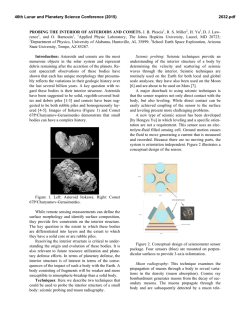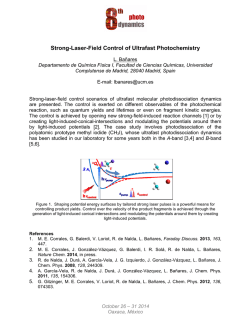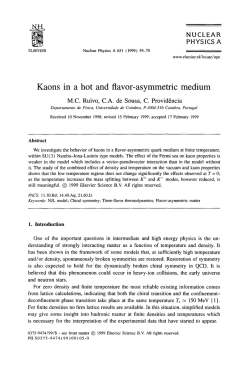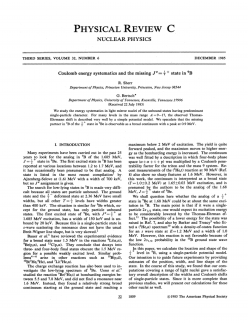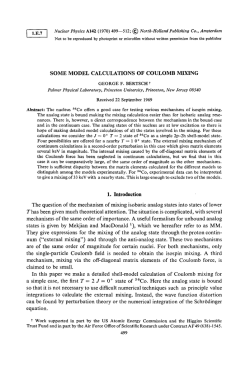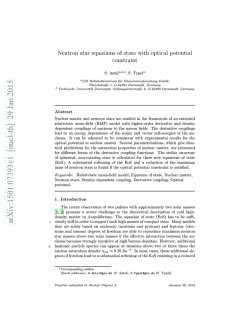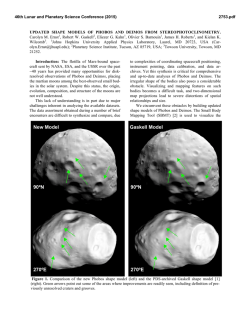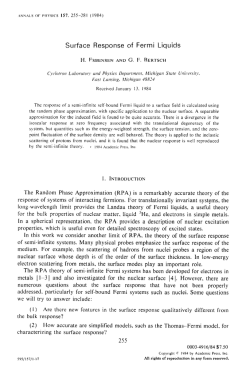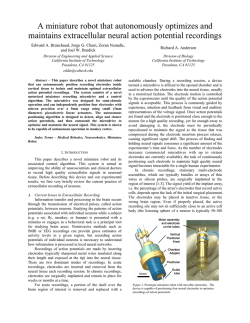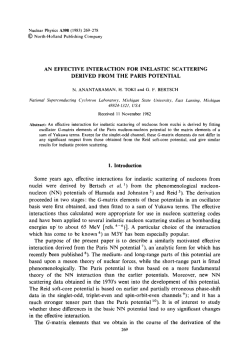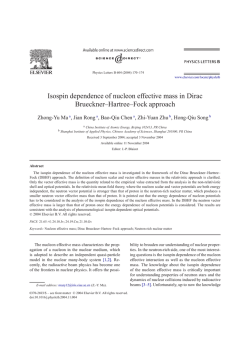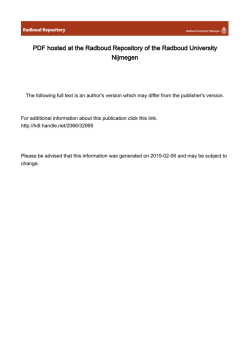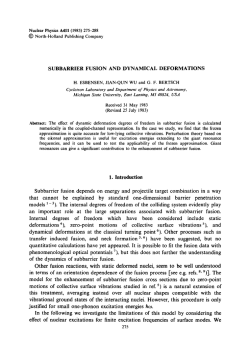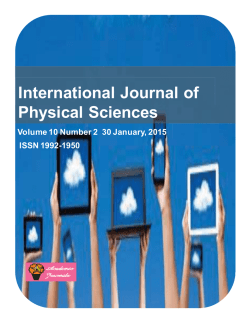
∂μ Aμ ∂μ Aμ ∂μ∂μ Jμ = (ρc, φ c , E = − ∇φ − ∂ A ∂t
Problem 1) 1.1 in book Problem 2) 1.6 in book Problem 3) Below are 4 expressions in our new covariant notation. Expand these out in terms of the 4-‐vector components, use t,x,y, and z as your contravariant coordinates and write the derivatives as ratios of differentials. A µ Aµ ∂µ A µ ∂µ Aµ ∂µ ∂µ Problem 4) The electromagnetic field tensor, F is defined µν F µν = ∂µ Aν − ∂ν A µ Two 4-‐vectors we may use is the 4-‐current (charge and current density) and the 4-‐ potential (electric and vector potentials). In SI units these are: φ J µ = (ρ c, J ) A µ = ( , A) c Recall the relation between the potentials and fields in SI units: ∂A E = −∇φ − ∂t B = ∇× A Also recall the relation between the speed of light and the permittivity and permeability: c= 1 ε0µ0 Show that ∂µ F µν = µ 0 J ν is equivalent to the two inhomogeneous Maxwell’s equations: ρ ∇•E = ε0 1 ∂E ∇×B− 2 = µ0 J c ∂t Problem 5) Fill in the missing SI column for the table and show work for all quantities. Quantity Length Mass Speed Energy Time Frequency Gravitational Constant (G) Natural Units 1 GeV-‐1 1 MeV 1 1 eV 1 keV-‐1 1 MeV 6.71x10-‐57 eV-‐2 SI Units Problem 6) The Planck Mass is given by M pl = G −1/2 G is the gravitational constant. What is this in eV? In SI units? Problem 7) The typical time for a strongly decaying particle to decay is 10-‐24 seconds. Express this in units of energy. Problem 8) If one were to use and electron beam to find evidence that the proton had a non-‐zero radius what would the minimum energy of the electron beam need to be? Problem 9) Protons at the LHC have an energy of 3.5 TeV. How fast would a paperclip have to move to have this much energy in kinetic energy? Problem 10) Give the following constants in terms of eV, meters and seconds: h, , c, c Problem 11) The potential energy between a muon and proton bound state is given by: U =− α r What is the kinetic energy of the muon, the potential energy and the binding energy in eV? Assume the muon is in the ground state. Problem 12) The Dirac equation in Natural units is iγ 0 ∂ψ ∂ψ ∂ψ ∂ψ + iγ 1 + iγ 2 + iγ 3 − mψ = 0 ∂t ∂x ∂y ∂z re-‐write this in covariant notation. Problem 13) Define the following: Fermion, Boson, Hadron, Baryon, Meson, Quark, Lepton, Flavor, Color, Fine structure constant, Tauon, Muon, dE/dx, Calorimeter, Instantaneous Luminosity, Integrated Luminosity.
© Copyright 2026
